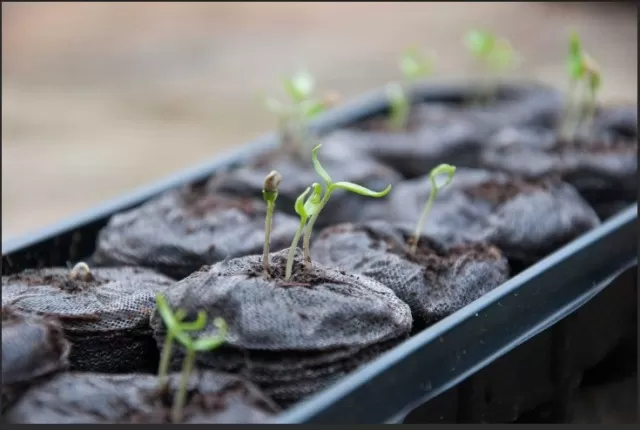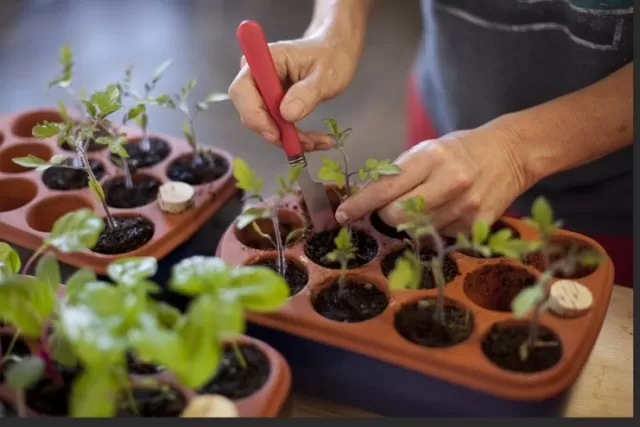Indoor Seed Starting: Common Mistakes New Gardeners Avoid. Embark on your gardening journey armed with knowledge and foresight, ensuring that your efforts yield fruitful results right from the start. By avoiding these common rookie blunders, you’ll set the stage for a garden that flourishes and thrives.By steering clear of these novice mistakes, you’re well on your way to cultivating a garden that thrives, bringing you joy and satisfaction throughout the growing seasons.
Cultivate Seedlings Indoors or Outdoors: Nurturing Growth at Your Fingertips

Initiating the growth of seedlings indoors presents an excellent strategy to seize an advantage in the upcoming planting season.
This approach offers the opportunity to effectively tend to a multitude of young plants within a confined, regulated environment, shielded from the menace of garden pests. Furthermore, it elongates the window for cultivation.
Within various regions, beloved garden denizens such as tomatoes and peppers would scarcely have adequate time to burgeon and yield delectable produce had we directly sowed their seeds in outdoor plots. Despite the existence of select plant varieties that thrive through direct sowing, exemplified by carrots and beets, a host of others experience remarkable benefits from an initial indoor commencement.
Initiating the germination process itself is not inherently complex, as it is an innate occurrence in the natural world, unfurling without human intervention.
Nevertheless, there are specific insights that demand consideration if one aspires to nurture robust, thriving plants. Numerous fledgling gardeners acquire these insights through arduous trial and error.
In an endeavor to spare you such a predicament, we have curated the ensuing compilation of prevalent blunders, thereby alleviating the need for their recurrence.
Timing Missteps: Striking the Right Balance for Seedling Growth
Dealing with the frustration of seedlings that either outgrow their designated size or remain underdeveloped upon the arrival of planting season can be disheartening.
The germination process for each type of seed unfolds at its own unique rhythm. Some swiftly sprout the moment they make contact with the soil, while others take several weeks to make their appearance. Subsequently, they require ample time to progress to a state of maturity, marked by the emergence of at least four true leaves, before they are ready for transplantation.
To ensure optimal growth and readiness, it’s prudent to initiate the cultivation of garden seeds indoors one to two months prior to the anticipated transplanting period.
Accurate timing plays a pivotal role, and a reliable guide to determine this lies on the reverse side of the seed packet. Typically, the packet provides comprehensive guidance on commencing the germination process indoors, with timing recommendations tethered to the average final frost date in your specific geographic location.
By heeding these instructions, you can master the art of planting at the right moment, achieving a harmonious equilibrium in seedling development.
Choosing the Right Soil: Navigating the Terrain for Successful Seedlings

Distinguishing between garden soil, potting soil, and seed starting soil is essential due to their distinct capabilities and limitations.
While the former two varieties are tailored to nurture fully developed plants, they prove unsuitable for the delicate process of seed starting. Enter seed starters such as the Black Gold Seedling Mix, meticulously formulated to preserve an optimal moisture level conducive to germination and the initial phases of plant growth.
Characterized by its lightweight composition, this mix predominantly features finely textured peat moss, vermiculite, and perlite.
The finer texture of this specialized mixture serves as an accommodating medium for nascent seedlings, facilitating their emergence and root expansion with minimal hindrance.
Embracing this appropriate blend ensures that your seedlings embark on a journey of growth unhindered by unsuitable soil properties, ultimately nurturing strong and vibrant plants.
Optimizing Light Angles: Avoiding Slanted Growth for Seedlings
While it’s conceivable to initiate seed germination on a sunlit windowsill, the outcomes are frequently less than desirable.
Although the light’s intensity might be satisfactory, the angle at which the sun’s rays enter can lead to the development of elongated, frail (leggy) plants that exhibit a propensity to grow askew, leaning towards the source of sunlight. However, there’s no necessity to invest in a costly specialized grow light system, especially considering that these plants are slated for relocation outdoors within a short span of weeks. A cost-effective remedy entails positioning a portable LED or fluorescent light fixture directly above the tray of plants, maintaining a distance of two to six inches between the bulbs and the leaf surface.
By implementing this approach, you can ensure that the angle and intensity of light are conducive to promoting robust and upright seedling growth, eliminating the issue of slanting stems.
This pragmatic solution empowers you to nurture thriving seedlings that are well-prepared for the impending transition to the outdoor environment.
Navigating Watering Extremes: Striking a Balance for Plant Vitality

Achieving the right balance between excess and scarcity of water is paramount in nurturing plants, underscoring the significance of proper watering practices.
Begin by adequately saturating the seed starting soil, ensuring it reaches the consistency akin to that of a well-wrung sponge, prior to transferring it into the seed tray. Following this, sow the seeds and snugly cover the tray with a plastic lid.
Refrain from introducing additional water until the seeds have germinated and sprouted, at which point the cover can be removed to allow for ventilation. It’s advisable to take note of the tray’s weight post-seeding, serving as a reference for future watering cues.
As the seedling tray starts feeling lighter, it signals the appropriate time to water.
Avoid delaying until the soil becomes visibly desiccated or pulls away from the tray’s edges. Employ a quart-sized watering can or a fine mist spray bottle to deliver water from above.
Alternatively, another effective watering technique involves adding a ¼-inch layer of water to the plastic or metal tray positioned beneath the seedlings, allowing moisture to gently wick upwards into the root zone of the plants. Any surplus water should be promptly drained away to prevent waterlogging.
By heeding these watering guidelines, you can adeptly manage the water balance, nurturing resilient and flourishing seedlings that thrive without succumbing to the perils of flooding or drought.
*The information is for reference only.